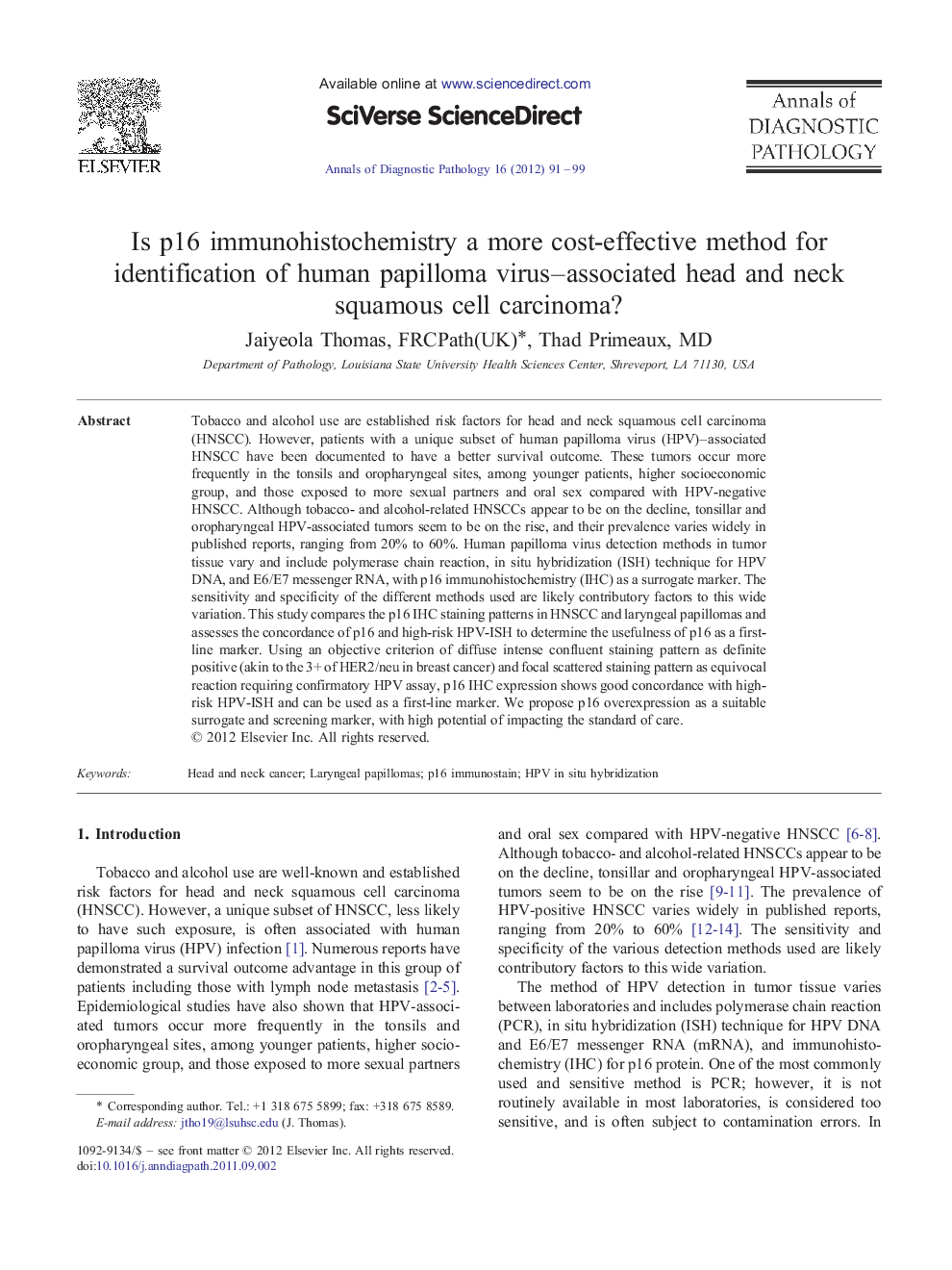| Article ID | Journal | Published Year | Pages | File Type |
|---|---|---|---|---|
| 4130015 | Annals of Diagnostic Pathology | 2012 | 9 Pages |
Tobacco and alcohol use are established risk factors for head and neck squamous cell carcinoma (HNSCC). However, patients with a unique subset of human papilloma virus (HPV)–associated HNSCC have been documented to have a better survival outcome. These tumors occur more frequently in the tonsils and oropharyngeal sites, among younger patients, higher socioeconomic group, and those exposed to more sexual partners and oral sex compared with HPV-negative HNSCC. Although tobacco- and alcohol-related HNSCCs appear to be on the decline, tonsillar and oropharyngeal HPV-associated tumors seem to be on the rise, and their prevalence varies widely in published reports, ranging from 20% to 60%. Human papilloma virus detection methods in tumor tissue vary and include polymerase chain reaction, in situ hybridization (ISH) technique for HPV DNA, and E6/E7 messenger RNA, with p16 immunohistochemistry (IHC) as a surrogate marker. The sensitivity and specificity of the different methods used are likely contributory factors to this wide variation. This study compares the p16 IHC staining patterns in HNSCC and laryngeal papillomas and assesses the concordance of p16 and high-risk HPV-ISH to determine the usefulness of p16 as a first-line marker. Using an objective criterion of diffuse intense confluent staining pattern as definite positive (akin to the 3+ of HER2/neu in breast cancer) and focal scattered staining pattern as equivocal reaction requiring confirmatory HPV assay, p16 IHC expression shows good concordance with high-risk HPV-ISH and can be used as a first-line marker. We propose p16 overexpression as a suitable surrogate and screening marker, with high potential of impacting the standard of care.
